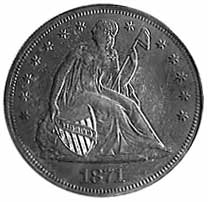Phrygian cap
|
|
de:Phrygische Mützeeo:Friga cxaponl:Frygische muts fr:Bonnet phrygien pl:Czapka frygijska (czapka wolności)
| This article is part of the hats and headgear series: |
| Overview of headgear |
| Hats; Bonnets; Caps |
| Hoods; Helmets; Wigs |
| Masks; Veils; Scarves |
| Tiaras; Papal tiaras |
| Crowns; Types of crowns |
| List of hats and headgear |
The Phrygian cap or Liberty cap is a soft conical cap with the top pulled forward, worn by the inhabitants of Phrygia, a region of central Anatolia in antiquity. In vase-paintings and other Greek art, the Phrygian cap serves to identify the Trojan hero Paris as non-Greek; Roman poets habitually use the epithet "Phrygian" to mean Trojan. The Phrygian cap can also be seen on the Trajan's Column carvings, worn by the Dacians, and on the Arch of Severus worn by the Parthians. The Macedonian, Thracian, Dacian and 12th century Norman military helmets had a forward peaked top design resembling the Phrygian cap.
The Phrygian cap is worn by the syncretic Hellenistic and Roman, though originally Persian, saviour god Mithras. The same soft cap is seen worn by an attendant in the murals of a late 4th century Thracian tomb at Kazanlak, Bulgaria (illustrated (http://www.digsys.bg/books/cultural_heritage/thracian/thracian-intro.html)).
Ravennamagi.jpg
The Phrygian cap was worn during the Roman Empire by former slaves who had been emancipated by their master and whose descendants were therefore considered citizens of the Empire. This usage is often considered the root of its meaning as a symbol of liberty. In Byzantium, Anatolian Phrygia lay to the east of Constantinople, and thus in 6th-century Ravenna, part of the Eastern Empire, the three Magi wear Phrygian caps, as generic "easterners" (illustration, left),
During the 18th century, the red Phrygian cap evolved into a symbol of freedom, held aloft on a Liberty Pole during the American Revolutionary War. It was also adopted during the French Revolution, and to this day the national emblem of France, Marianne, is shown wearing a Phrygian cap.
The cap has appeared on the coat of arms of Argentina and the United States of Central America, and an effigy of "Liberty" was shown holding the Liberty Pole and Phrygian cap on some early United States of America coinage (pictured right). It also appears on the Flag of the State of New York, as well as the official seal of the United States Army. The cap had also been displayed on certain Mexican coins (most notably the old 8 Reales coin) through the late 19th century into the mid 20th century.
The Phrygian cap is familiar to some as the headgear of the Smurfs.

